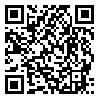Volume 4, Issue 1 (april 2020)
ohhp 2020, 4(1): 81-93 |
Back to browse issues page
Download citation:
BibTeX | RIS | EndNote | Medlars | ProCite | Reference Manager | RefWorks
Send citation to:



BibTeX | RIS | EndNote | Medlars | ProCite | Reference Manager | RefWorks
Send citation to:
karami J. Health and Safety Hazard Identification and Evaluation in Sun Air Reaserch Institiute of Ferdowsi University of Mashhad Using the FMEA Approach. ohhp 2020; 4 (1) :81-93
URL: http://ohhp.ssu.ac.ir/article-1-274-en.html
URL: http://ohhp.ssu.ac.ir/article-1-274-en.html
Islamic Azad University
Abstract: (2792 Views)
Introduction: Renewable energies, such as wind and solar energy have attracted the attention of scientific, research, and industrial communities due to its fewer threats to the environment and human health. The purpose of this study was to identify and assess the safety and health risks of the Sun Air research institute of Ferdowsi University of Mashhad.
Methods: In this descriptive cross-sectional study, the failure mode and effect analysis (FMEA) technique was used to identify and assess the risks of all Sun Air Research Institute of Ferdowsi University of Mashhad units in the second half of 2019. The HSE management team identified the risks of each unit separately and assessed the risks. All risks were prioritized following identification based on the range of priority numbers (RPN) method resulting from multiplication of the Occupancy, Severity, and Detectability components as well as the control measures.
Results: The RPN ranged from 18 cases related to repetitive work in inspection operations to RPN=180 related to electric current leakage. Among the risks, three potential risks had higher priority, which included electric current leakage (RPN=180), inhalation of toxic substances (RPN=162), and falling from a height (RPN=150). Other risks were ranked next in priority.
Conclusion: The results showed that use of FMEA technique was appropriate to identify and assess occupational risks in research and renewable energy production environments that lead to identification of risks at different levels. This helps the HSE team to eliminate or reduce the level of risks by providing control solutions with the priority of unacceptable risks.
Methods: In this descriptive cross-sectional study, the failure mode and effect analysis (FMEA) technique was used to identify and assess the risks of all Sun Air Research Institute of Ferdowsi University of Mashhad units in the second half of 2019. The HSE management team identified the risks of each unit separately and assessed the risks. All risks were prioritized following identification based on the range of priority numbers (RPN) method resulting from multiplication of the Occupancy, Severity, and Detectability components as well as the control measures.
Results: The RPN ranged from 18 cases related to repetitive work in inspection operations to RPN=180 related to electric current leakage. Among the risks, three potential risks had higher priority, which included electric current leakage (RPN=180), inhalation of toxic substances (RPN=162), and falling from a height (RPN=150). Other risks were ranked next in priority.
Conclusion: The results showed that use of FMEA technique was appropriate to identify and assess occupational risks in research and renewable energy production environments that lead to identification of risks at different levels. This helps the HSE team to eliminate or reduce the level of risks by providing control solutions with the priority of unacceptable risks.
Type of Study: Research |
Subject:
HSE
Received: 2020/01/19 | Accepted: 2020/04/6 | Published: 2020/04/29
Received: 2020/01/19 | Accepted: 2020/04/6 | Published: 2020/04/29
Send email to the article author
| Rights and permissions | |
 |
This work is licensed under a Creative Commons Attribution-NonCommercial 4.0 International License. |





